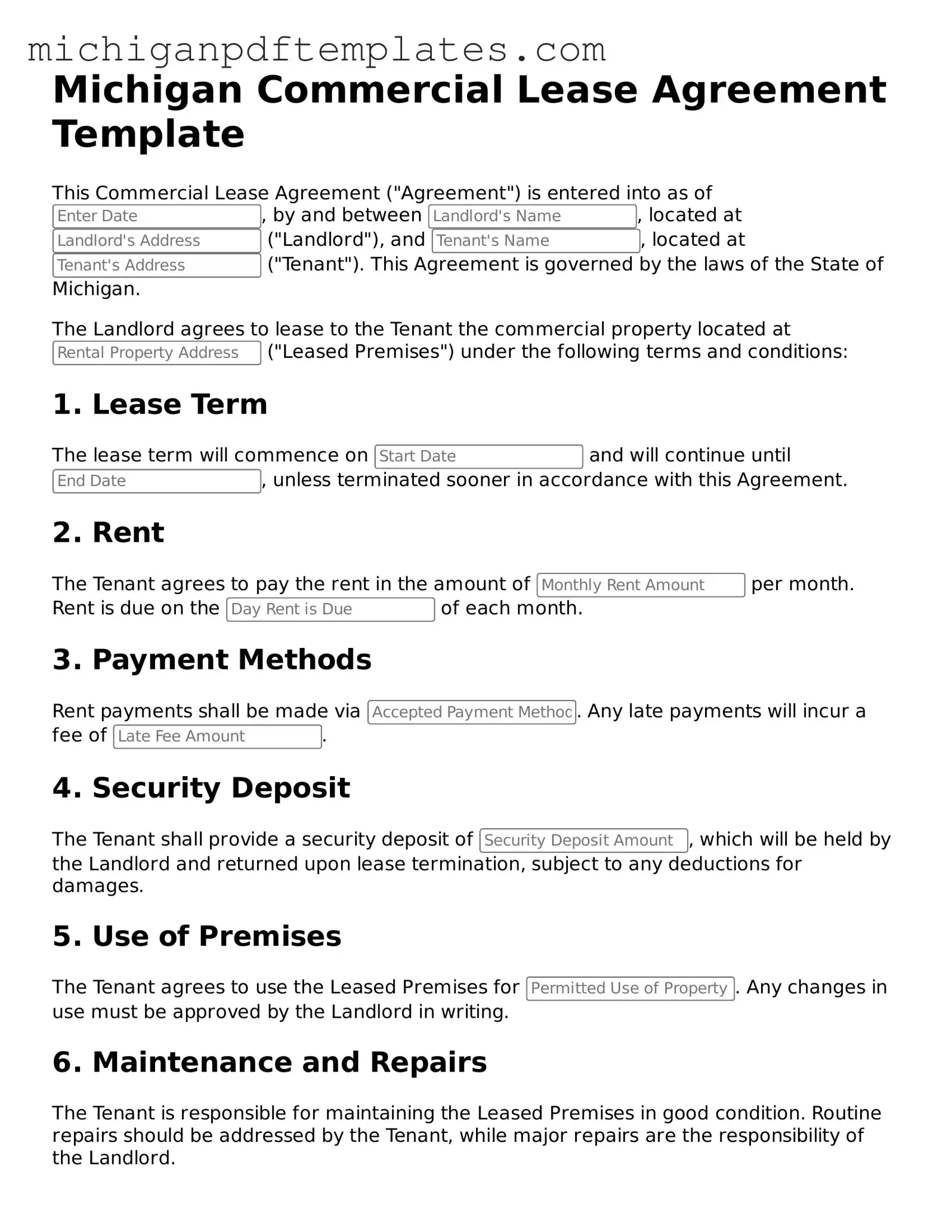Legal Michigan Commercial Lease Agreement Template
A Michigan Commercial Lease Agreement form is a legal document that outlines the terms and conditions for renting commercial property in Michigan. This agreement protects both landlords and tenants by clearly defining their rights and responsibilities. If you're ready to secure your commercial space, fill out the form by clicking the button below.
Get Your Form Now
